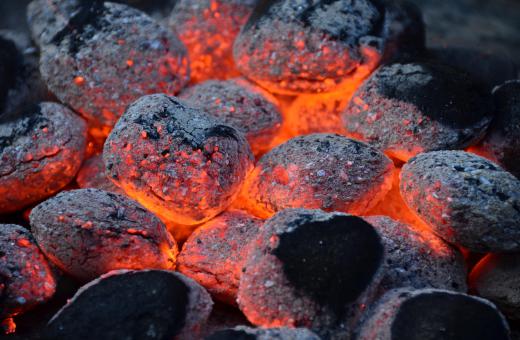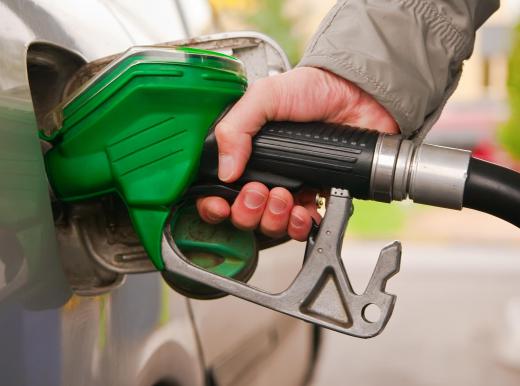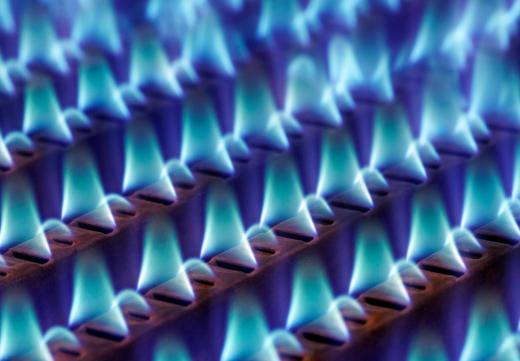What is Fuel Combustion?
Fuel combustion, also known as burning fuel, is the process by which a fuel is consumed in an exothermic chemical reaction that released a great deal of heat and light. Usually, the fuel that is combusted is a hydrocarbon that reacts with the oxygen in the air. A significant amount of heat energy is required to trigger such a reaction.
The main use of fuel combustion is energy. The most common fuels used for the production of energy are fossil fuels, which are made up of ancient, decomposed organic matter. Oil, coal, and natural gas are three of the most common fossil fuels used in fuel combustion reactions. The energy produced when these fuels are combusted can be used to power anything from cars to household appliances.

One of the initial challenges of using fuel combustion for energy was the instability of such combustion. Fire, it is well known, tends to be unpredictable and often violent. Harnessing this for energy was a difficult process. Devices such as modern fuel injectors ensure that the violent reactions remain controlled and at least relatively efficient, ensuring safety and a consistent supply of energy.

There are solid, liquid, and gaseous fuels that can be used in fuel combustion, most of which are hydrocarbons. Solid fuels burn in three phases. In the preheating stage, their temperature increases until they reach their flash point and begin to release flammable gases. Next is the distillation phase; in this phase, the gases released from the solid are burning, flames are often visible, and a great deal of heat is released. The final stage is the charcoal phase, in which the solid does not contain enough flammable gas to burn consistently, so it simply glows and smolders instead.

Liquid fuels tend to burn only in the gaseous phase. They are heated until they begin to evaporate, and the vapor ignites. Gases tend to burn quickly and easily as they are already in an energized state and their particles are far apart, allowing them to mix with oxygen and react easily.
Fuel combustion, especially with fossil fuels, tends to produce a significant quantity of CO2. Coal, in particular, is considered a “dirty” fuel because of the amount of harmful gases it releases into the atmosphere. Because of the necessity of widespread fuel combustion to produce energy, much CO2 is released into the atmosphere. Many fear that this could lead to widespread global warming. As such, many are attempting to do what they can to encourage energy conservation and to live in a way that is far cleaner and less demanding of energy and fuel.
AS FEATURED ON:
AS FEATURED ON:














Discussion Comments
I really need four examples of fuels for combustion!
What are the reactants and products in hydrocarbon combustion in automobiles?
What is the best way to save fuel in the combustion process? If I could do one modification to my vehicle (truck) to increase fuel economy what would people recommend?
@GiraffeEars- The Otto power cycle is what combustion engines are based on. The easiest way to describe the fuel combustion process in an Otto cycle is to describe a piston in a four-stroke engine.
In the first stroke, the piston rises up to force out exhaust gas through an open valve, or valves. The second stroke in the cycle, the piston drops, either pulling in air or a gas and air mixture (depending if the engine is carbureted or fuel injected), through the intake valve. During the third stroke, the valves are all closed. The piston compresses the air and fuel mixture, increasing pressure and reducing volume.
At the top of the third stroke, ignition occurs, causing the piston to transition into the third stroke. The fourth stroke, also known as the power stroke, occurs from the increased pressure of combustion, forcing the piston down and causing it to do work. At the bottom of the power stroke, the exhaust valve opens again, resetting the cycle.
What is the Otto combustion cycle? Is it also applicable to ethanol combustion?
Post your comments